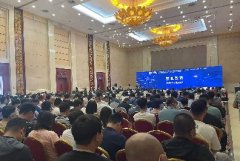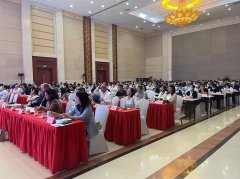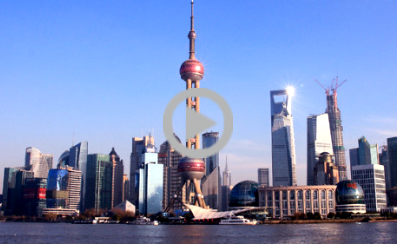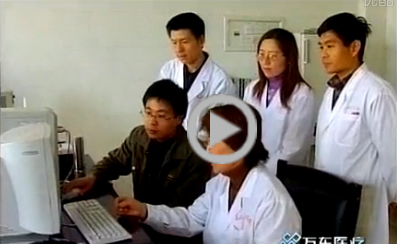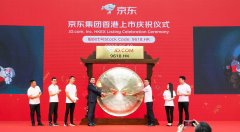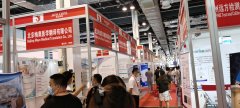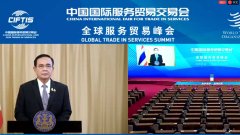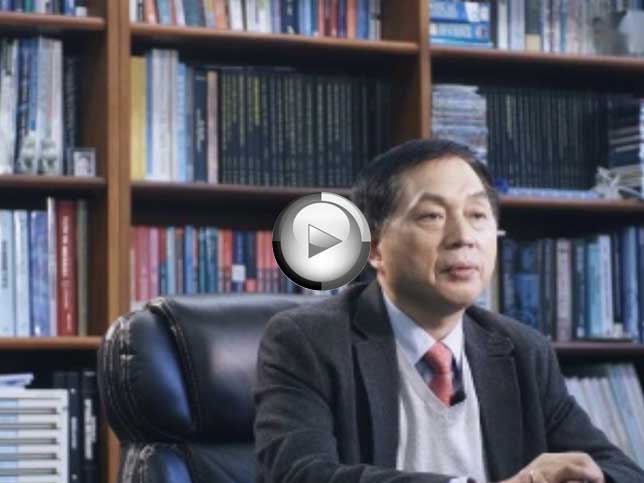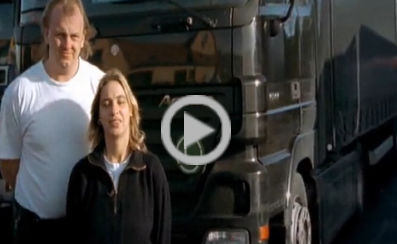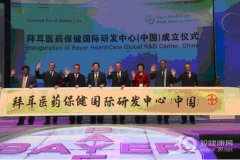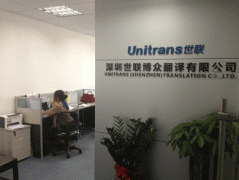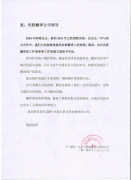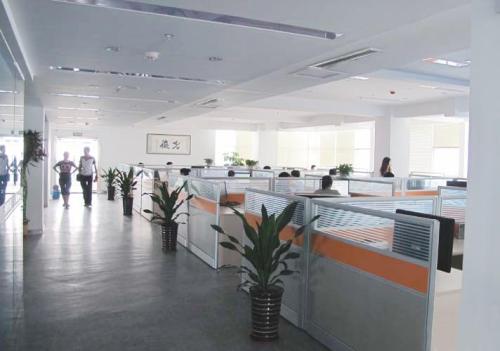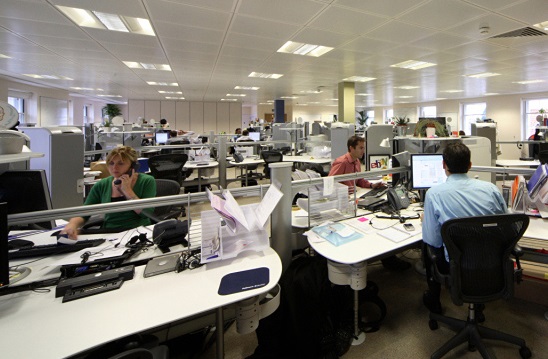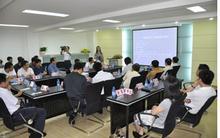上海翻译公司完成杂志介绍-达尔凯内部刊物英文翻译
时间:2018-05-14 09:01 来源:未知 作者:dl 点击:次
上海翻译公司完成杂志介绍-达尔凯内部刊物英文翻译
DALKIA ENERGY SAVINGS CENTERA nexus for negawatt-hours DALKIA’S IN-HOUSE MAGAZINE 04 PANORAMA -Heating and cooling networks Strategic partnership in Hungary -Energy services for buildings Healthcare: three new references in Europe -Industrial utilities Sweden: Findus reduces its carbon footprint 09 VISION -Dalkia Energy Savings Center A nexus for negawatt-hours 18 IN ACTION -Aerial thermography Spotting the invisible from the sky O7 INNOVATION -Materials of the future Smarter buildings 14 VIEWPOINT -Customer relations A multifaceted role 22 OUTSIDE PERSPECTIVE -Information management Decrypting “Big Data” 08 INSIGHT -Energy efficiency Wood-fuel preparation 16 SPOTLIGHT -The Heat-Tech Center in Warsaw The brains at the heart of the network 24 IMAGE -France Limagrain produces heat with corn France 13.5 South 11.4 2013 OBJECTIVE : 8 Namea 6.8 2015 OBJECTIVE: 5 Continental Europe 2.7 Accident frequency rate in May 2013: 9.07 (up 1% from 2012) Safety Management has devoted much of its attention to the Dalkia 20.20 transformation program. So we must not let down our guard on safety. The accident frequency rate is still short of the target set for 2013. The situation is worsening in some countries such as Portugal and Belgium. Progress has stalled in France. Spain continues to improve and other countries such as Poland and the Czech Republic are achieving exemplary results. Editorial Franck Lacroix Chairman of Dalkia Being number one is a state of mind. Maintaining our lead through innovation Creativity and innovation have always been part of our lifeblood at Dalkia. It is through this ability to think outside the box that we have established our position as market leader. And as today’s standard-bearer in these various markets, it is our responsibility to continue pioneering new approaches and promoting growth in the sector. It is up to us to lead the way. I believe being number one is above all a state of mind. It means being bold enough to pursue new ideas, to throw off the fetters of convention, to shake up the status quo, to continuously break new ground and explore new regions, to consider fresh opportunities, seek new ways of enhancing performance, find fresh solutions to help our customers reduce their energy bills and anticipate the economic and environmental constraints that will increasingly affect the energy industry. Innovation concerns every aspect of our company. Much of our effort in the past has been focused on innovating and enhancing the technical aspect of our solutions through improvements in the technology and efficiency of facilities and the use of alternative energy sources. I would now like us to also break new ground in customer relations, to more effectively meet the needs of the people who use our energy solutions and services while building stronger partnerships with stakeholders. The campaign to streamline our practices as part of the Dalkia 20.20 plan is not incompatible with this ability to cultivate innovative ideas. Quite the opposite: it is precisely by standardizing and introducing best practices throughout the company that we can derive the greatest economic and commercial benefit from our future innovations. Thanks to Dalkia 20.20, the product of your creativity and innovation will be reaped, shared, improved and used on a scale larger than ever before. In every aspect of our business (technical, commercial, legal, etc.), new ideas are emerging to break the mold and help us make further progress. The DESC is a fine example: a unique solution that has put Dalkia at the forefront of the campaign to produce “negawatt-hours”. This wealth of ideas and initiatives is one of our greatest assets, and Dalkia 20.20 reinforces this strength by ensuring we never closet away an idea or initiative with the potential to spark improvements elsewhere. Let us continue to be creative; let us never stop innovating; but let us now make sure that we also strive to share best practices across the company, wherever possible. This is a goal that will help us maintain our leading position. Hungary Strategic partnership in Hungary After more than 20 years of fruitful partnership, Dalkia and the Hungarian government have signed a new agreement that capitalizes on Dalkia’s expertise and know-how and opens up new prospects for growth. The mayor of Tata presented Dalkia with the symbolic key to the network. Through this novel and strategic agreement, the Hungarian government has acknowledged Dalkia’s skills and expertise with regard to energy efficiency and the use of biomass. Of the 20 foreign companies that have entered into a partnership of this kind with the government, Dalkia is the only one that operates in the strategic energy industry. The company will be asked to take part in taskforces on energy issues, where it can make its voice heard. But there’s more. “It also serves as well-deserved recognition of our employees’ skills and the expertise of our workforce,” beamed Gérard Bourland*, CEO of Dalkia Hungary, speaking of the personnel recruited and trained on-site, who have spent an average of more than 16 years with the company. “In expressing its desire for cooperation and dialogue,” explained Gerard Bourland, “the Hungarian government is offering us new opportunities in terms of training, innovation, job creation and growth drivers for the Hungarian economy.” Much more than a perfunctory honor, the distinction given to Dalkia Hungary is further proof of its valued presence in the country. With 300 contracts in place across Hungary, the company plays an integral role in local communities. These long-term contracts call for strong and lasting partnerships in cities such as Pécs (population 160,000), where biomass will soon replace natural gas, and in Tata, where Dalkia has signed a 25-year concession contract. “The agreement signed between Dalkia Hungary and the Hungarian government is a testament to the success of Franco-Hungarian economic cooperation based on mutual trust,” affirmed Peter Szijjarto, Hungary’s Secretary of State for Foreign Affairs and External Economic Relations. “This agreement benefits both Dalkia and the Hungarian people.” It represents a form of certification for Dalkia that will “pave the way for new facilities,” concluded Gerard Bourland. “The agreement also recognizes Dalkia’ s role in helping the country meet its objectives in terms of renewable energy and energy self-sufficiency.” * Gérard Bourland was recently appointed CEO of Dalkia Poland. CZECH REPUBLIC New biomass power plant A new biomass combined heat and power plant has been brought on stream in Frydec- Mistek. This environmentally friendly facility will cover the electricity needs of all of the city’s homes for six months each year and will save 18,000 metric tons of coal per year. FRANCE Nîmes: Dalkia renews its management contract Overcoming fierce competition, Dalkia has succeeded in convincing Nimes to renew its delegated-management contract for the city’s urban heating network. The 25-year contract calls for the introduction of renewables into the energy mix in 2014, by connecting the network to the municipal waste incinerator located a few kilometers away. 375,000 metric tons of CO2 avoided over 25 years HEALTHCARE Three new references in Europe Dalkia is stepping up the deployment of energy-performance contracts (EPC) in the field of healthcare. In the suburbs of Barcelona, Consorci Sanitari de Terrassa (CST), a public-sector healthcare provider serving 200,000 people, has signed a 10-year EPC for eight clinics, a retirement home and a hospital. A partner of the Basque coast hospital center for the last 12 years, Dalkia has also inked a deal to operate heating, hot water, power production, cooling, steam and air treatment facilities at its new Saint-Léon hospital in Bayonne. The 16-year contract features a carbon-neutral optimization solution using renewable energies, including the creation of a biomass heating plant. Finally, Dalkia recently signed a 10-year energy efficiency contract with the Sainte-Anne Saint-Remy clinic owned by Chirec in Benelux, in which energy will be supplied from an existing heating plant and a new cogeneration unit. This is a strategic contract, as it represents a first step toward landing a comprehensive technical and energy management contract with the hospital, the tender for which is scheduled for late this year. Dalkia is stepping up the deployment of energy-performance contracts (EPC) in the field of healthcare. UNITED ARAB EMIRATES Dalkia signs on at four major airports Dalkia has signed a three-year contract with Abu Dhabi Airports Company (ADAC) to supply a complete range of technical and energy services at four major airports in the United Arab Emirates. With the help of 300 employees, Dalkia will manage and operate security systems, heating, electrical equipment and operating systems. SWEDEN Findus reduces its carbon footprint Leading food industry player Findus has signed a contract with Dalkia to optimize operations and maintenance in Bjuv, its largest production site in Sweden. The three-year deal aims to cut costs by at least 15%, largely through energy savings and a reduction in the site’s carbon footprint. UK David Cameron visits Cameron Bridge distillery British prime minister David Cameron visited the Cameron Bridge distillery owned by Diageo, the world’s leading premium drinks business. The site has built a reputation as Scotland’s largest distillery and as a showcase for energy performance and environmental solutions. In partnership with Dalkia, the company installed a biomass plant fueled by spent wash from the distillation process. The recycling solution provides 80% of the electricity and 98% of the steam used at the distillery. Annual CO2 emissions reduced by 56 000 metric tons CZECH REPUBLIC Cooling systems for mines in Moravia-Silesia Dalkia has begun providing cooling solutions for the Czech Republic’s largest mining company, OKD, at its DSA mine in Karviná. Three refrigeration units with a total installed capacity of 10 MW supply chilled water at a temperature of 2.4°C at a depth of over 1,000 meters. MATERIALS OF THE FUTURE Smarter buildings New high-performance building products are now being developed. Dalkia tests these “materials of the future” to assess their efficiency, ease of maintenance and the real benefits they provide. 1 SMART CONCRETE New smart concrete materials use microfibers that allow the concrete to “heal itself” and fill any cracks as soon as they appear! The technology involved comes from R&D in aeronautics. However, smart concrete is still extremely expensive and is only used in certain aspects of construction work, such as piles for bridges. 2 ELECTROCHROMIC GLASS Electrochromic glass—known as smart glass—incorporates titanium and tungsten oxides, and can darken on demand, reducing the need for air-conditioning while providing ample lighting. This type of glass has so far only been used on upscale buildings in Japan and the United States. The technology is of real interest to Dalkia if it can be controlled remotely. 3 TRANSPARENT WALLS These walls are made of glass or polycarbonate and use aerogels derived from nanotechnology that allow 50% of the sun’s heat to pass through while providing effective insulation. The walls warm up and create a significant “glasshouse effect.” 4 PHASE-CHANGE MATERIALS These materials are of particular interest to Veolia R&D. They feature paraffins that change phase—transitioning from solid to liquid—at high temperatures (22-26°C). When incorporated into mortar or suspended ceilings, they reduce the need for heating and air-conditioning. SEVEN ASSESSMENT CRITERIA Spurred by the search for greater energy efficiency, manufacturers are developing increasingly active materials. The main drawback is that these materials are expensive, and the benefits in some cases are not yet clear. Dalkia is developing some of these materials in partnership with manufacturers and is testing these products of the future. Approval for use is based on seven criteria: comfort, consumption, use, maintenance, economic benefits, user safety and employee safety. ENERGY EFFICIENCY Wood-fuel preparation Wood is a living material with a range of species that can have a variety of physico-chemical properties when burning. Dalkia continues to hone its expertise at every stage of the wood preparation process to further improve energy efficiency. VIEWPOINT Pierre de Montlivault, CEO of Bois Energie France (BEF) Improving the supply chain: a real asset for Dalkia “There is booming demand for wood fuel. In France, the commissioning of four new facilities in 2013 will increase our consumption by 30%! Half of our supplies come from forestry by-products, which provide a significant untapped resource. Five years from now, they will represent 80% of our feedstock. To meet this demand, we have established a high-quality supply chain over the past few years by encouraging our suppliers to develop forest-based wood-drying systems. After studying approaches used in other countries, we no longer buy wood by the ton; we now work in megawatt-hours: one metric ton of dried wood with a moisture content of 45% is ‘worth’ 2.5 MWh. By developing this approach in our contracts, we encourage suppliers to further improve the way they prepare wood fuel.” Fuel quality Wood behaves differently when used in boilers, depending on the species, moisture content and particle size, i.e. the size of the wood chips. The wood-fuel preparation process is designed to standardize these characteristics, to the extent that is possible with a living material. The size of the boiler is also very important: the bigger it is, the more tolerant it is. Smaller systems require the same type of wood, and the feedstock must be dry, but there is now a trend towards building larger boilers that are compatible with a wide range of wood. Key stages in preparing wood fuel Forestry waste like branches and small trunks is dried outdoors for two or three months to ensure optimal moisture content, below 45%. Wood waste like pallets need not be dried. However, this type of waste does have to be carefully sorted to weed out any wood that has been treated with chemicals before crushing and mixing with products that have a higher moisture content. Compressed sawdust pellets are only used in very small boiler systems. The expertise required to treat wood fuel The moisture content of the wood has to be checked beforehand. This is done by putting samples taken on delivery in a drier for 24 hours. Other, faster technologies such as microwaves are also used. Dalkia works with manufacturers on improving boiler design and management to fine-tune the various set-ups based on wood moisture content and to boost energy efficiency. DALKIA ENERGY SAVINGS CENTER A nexus for negawatt-hours 20 % The level of energy savings achieved in contracts managed by Dalkia. With the DESC, the goal is to double this figure. Centralized management of facilities is a focal point of the AND program, which seeks to standardize Dalkia processes. Dalkia Energy Savings Centers (DESC) are a first milestone on the road to fulfilling an ambitious objective: doubling the level of energy savings achieved in contracts managed by Dalkia. At first glance, the surroundings are reminiscent of a stock-exchange trading room. On the wall, nine giant screens display graphs, figures and even weather forecasts. Analysts sit at their workstations, telephones glued to ears and eyes glued to screens, giving out instructions. Yet the atmosphere is more studious than that of any trading room floor. Here, at the brand new Dalkia Energy Savings Center (DESC) in Paris’ La Défense business district, the analysts and auditors do not feverishly swap millions of dollars: instead, they provide centralized management for 4,000 heating systems spread throughout the Greater Paris region. Their goal is to detect and correct any unwanted drop in performance at heating plants that might be more than 100 km away, while ensuring optimal operations based on outside temperature, the building’s “energy signature” and past consumption. Bridgehead “The DESC is designed to promote widespread energy efficiency,” explains Jean-Luc Maiolini, director of operating performance at Dalkia. “Since its initial pilot, in the fall of 2012, the center has already helped to reduce our energy use by 5% across some 300 sites. The goal is to achieve annual energy savings of around 350 GWh by 2015 simply by managing facilities more efficiently, with practically no investment needed!” The DESC in La Défense focuses solely on the ILe-de-France region and is a bridgehead for a series of similar solutions due to be rolled out across Dalkia’s seven French regions by the end of the year. Comparable set-ups are already in place in Lille, Nancy and Lyon. Dalkia operates no fewer than 25,000 “decentralized” sites in France, including municipal buildings, schools, retirement homes and multi-family housing—none of which require a permanent on-site presence. Technicians regularly visit these sites to make adjustments, carry out maintenance and read meters. “With 25,000 different facilities, you can see how some might be more effective than others and achieve better results,” adds Mr Maiolini. “The DESC allows us to pool our expertise and use more efficient resources to provide the best possible oversight for all facilities while benchmarking our sites and triggering more effective action.” Optimizing energy use The concept is an immediate result of the AND program, which is part of the Dalkia 20.20 transformation plan and aims to streamline and standardize processes used by all companies within Dalkia. “The thinking behind the DESC grew out of the first meetings held to discuss the transformation plan,” remembers Daniel Maion, operating manager at the Dalkia Eastern France regional office. “Pilot initiatives were quickly launched to determine the new organization and resources needed to get the system up and running.” Renaud Pinon manages the DESC in La Défense and was also involved in the pilot phase: “The initial goal was to monitor our energy-performance contracts. However, we soon realized that the tools we had developed could help us do a lot better and improve the performance of all our facilities. That means ensuring that we not only live up to our commitments but that we also manage our facilities more efficiently to enable energy savings wherever possible.” FOCUS PART MANAGEMENT CENTER PART COMMERCIAL SHOWCASE With its futuristic décor, sophisticated furnishings and wall of screens, the DESC in La Défense provides 160 square meters of state-of-the-art facilities that are both spacious and well lit for the four analysts, two auditors/instructors and three IT technicians who work at the center. “It’s more than a showroom,” says Francisco Silverio Marques at Dalkia’s marketing department. “We could just as easily set up a DESC in a big office with a few computers. However, we chose to make it an operation showcase for our expertise— a place our customers and prospects can visit. It might be simple enough to sell gas to a customer, but it is a lot more difficult to sell an ‘immaterial product’ like energy savings. The DESC gives shape to this ‘non-consumption’ and gives tangible proof of the ‘negawatt-hours’ we supply each day.” Better still, a commercial solution is being drafted that combines the DESC and the concept of “energy data management”. It will offer customers new reporting tools available on paper and online that can be viewed on tablets or smartphones, making it possible to monitor consumption in real time, based on contract type. Analysts and auditors provide centralized management for 4,000 heating systems. IDENTIFYING AND IMPLEMENTING BEST PRACTICES “The DESC was originally developed to help us monitor our energy-performance contracts (EPC) and detect any issues right away, but we quickly realized it could do much more. We originally set out to simply correct any problems, but now we’re working on constant improvement: the DESC helps us run facilities more efficiently, resulting in significant energy savings and cost cutting. And that’s not all. Dalkia has massive amounts of data on its sites worldwide, but had not been able to take full advantage of this wealth of information. The DESC is also a benchmarking tool that can effectively identify best practices and roll them out to the rest of our sites. Dalkia operates more than 130,000 facilities of all sorts worldwide; by gathering all of this information in one place, we will be able to lower costs considerably.” Jean-Luc Maiolini, Director of Operating Performance Resolving technical problems remotely Dalkia has a bulk of data on its facilities—covering everything from indoor and outdoor temperatures to pressure, consumption and adjustments—which can sometimes span five to ten years or more. The tools developed for the DESC allow the company to process and analyze this data more efficiently using more concise reporting systems. Graphs and histograms give specialists an instant snapshot of the performance of each facility. Automatic alerts draw attention to any areas of non-compliance. “It’s really effective,” says Mr Pinon, pointing to a graph on his screen. “This is the data for a residential building in Garges-lès-Gonesse. You can clearly see here that we have two boilers in operation, with an outside temperature of 10°C. That’s not normal.” (A technician was dispatched to the site, quickly finding and replacing a faulty valve.) “Here, you can see on the graph how energy consumption drops after the callout. So we solved the technical problem, but we didn’t stop there. We analyzed operations at the site and came up with a new configuration. Together these changes boosted efficiency from 87% to 93%.” As a result, “The technical issue was resolved and we reduced gas consumption by 4% for a site that uses 2,800 MWh a year.” Analysts and auditors Setting up the DESC involved creating a new organization, which was also tested through pilot schemes. “When we detect an anomaly, we immediately call the technician responsible for the facility to check the configuration and request any modifications,” says Fanny Hazard, an analyst at the DESC in La Défense. “This is new: previously, the technician only received instructions from an immediate supervisor. The chain of command is informed of our requests and we regularly meet with teams in the field to explain our approach and present our findings: it makes it easier to gain support for the project once people have seen the tangible progress made by each facility.” Denis Bougjdi is a former operating manager who is now an auditor/instructor at the DESC, a new position created when the center was set up. “We are brought in once the analyst has identified a problem at the facility. We visit the site to check the heating plant with the technician, then work with the technician to find a solution and replace equipment where necessary. We also provide relevant assistance and training to help the technician make any adjustments and set up equipment to ensure everything runs smoothly. This dialogue is a lot more effective than simply writing up a technical report and a series of recommendations. It lets us share best practices and helps teams to optimize facilities across the board.” This new organization is to be implemented by all seven French regions by the end of the year. In Lille, Dalkia’s Northern Region also set up a pilot in the fall of 2012. It currently handles 3,500 of the 7,000 sites spread across the region. By the end of the year, they should all be connected to the future DESC, which will employ around 10 people. “Automated processing allows us to automatically display and correct any anomalies,” says David Baylon, site manager. “The centralized organization also improves performance by ensuring more efficient, standardized management of facilities.” This new organization is to be implemented by all seven French regions by the end of the year. “That’s just the beginning,” says Jean-Luc Maiolini. “Energy savings centers are a powerful tool in our bid to optimize performance and we aim to roll them out across the entire company. Following our initial focus on decentralized sites, we are already working on ways to extend the concept to industrial sites. There are not as many of these sites but the challenges they face are more complex. Other countries, such as Ireland, the UK and the Benelux have also expressed an interest in the project. We are only just beginning to touch on the potential of the DESC.” Once people have seen the tangible progress made by each facility it makes it easier to gain support for the project. ZOOM DESC TESTS SET TO BEGIN IN THE BENELUX COUNTRIES “Dalkia manages around 2,000 sites in the Benelux countries, 90% of which are municipal or service-sector buildings such as hospitals and sports or cultural facilities. Over the past four or five years, we have been working on a management tool that we would like to develop further. We are really interested in the DESC experience in France: the resources put in place enable more thorough reporting while the centralized DESC organization opens up some interesting opportunities. We are already testing these tools at four pilot sites and are aiming to try centralized management in the near future by connecting them to the DESC in Lille or La Défense. The long-term goal is to set up our own center in Belgium. To do so, we will be looking to develop a new organization and profiles similar to that of the analysts and auditors in France. This experience is also of interest to other business units in Europe: Ireland, the UK, Poland and Sweden are also reviewing the tools developed for the DESC. Knowledge sharing within the company is a key building block for our future success: we have a vast pool of expertise spread across all countries and the more we share this expertise, the more we will improve.” Wim Maton, Technical and Operating Director, Benelux CUSTOMER RELATIONS A multifaceted role Dalkia’s service mentality is one of its key values. Whether they are technicians, salespeople or administrative personnel, Dalkia employees care about providing quality customer service. Anticipating the future needs of our clients Dalkia is active in in eight Bombardier sites in the Belfast region, working in the areas of high voltage, environmental management, combined heating and power, energy management, safety systems and maintenance management. My work mainly consists of constantly making sure that the actions carried out by my team of 41 people meet the expectations of our client. We also try to anticipate future needs by leaving the door open to integrating additional responsibilities into Dalkia’s scope of operations. The idea is to show Bombardier that we are not only defending their current interests, we are doing so as part of a long-term vision. UNITED KINGDOM/IRELAND Joseph CLANCY, Site Manager for Bombardier Aerospace (Belfast) Bringing out new projects that stimulate demand Business development at Dalkia requires making a significant effort to build strong relationships with our clients. In concrete terms, this can take on many different forms in my day-to-day work, such as organizing meetings or site visits, giving presentations about the company and its services, and taking part in events and trade shows. Our objective is to inform our clients about our expertise and to bring out new projects that stimulate demand. It’s also about gaining people’s confidence so that Dalkia will be in a favorable position when the call for tenders takes place. SWEDEN Maya HANNA, Business Development Manager at Dalkia Nordic (Stockholm) We are in permanent contact with our customers My colleague and I handle customer relations for a heating network in the town of Cegléd that supplies some 1,900 homes. We are in permanent contact with them, either by telephone or email, so that we can answer any administrative or technical questions they may have. This could include a request for an explanation of billing process, advice on how to change a radiator, information on how the contracts work or on the steps to take in case of a breakdown. We even sometimes help them fill out forms or contracts. HUNGARY Tiborné HORVáTH, Customer service at Dalkia Hungary (Cegléd) Finding personalized solutions In my department, we are in regular contact with customers, particularly when contracts are being prepared, when additional clauses are being signed or when there is confusion about an invoice. When it comes to collection, if our customers find themselves in financial difficulty, we make an effort to communicate with them, in order to find a personalized solution. Our job also includes making sure the company runs smoothly, of course, so if customers don’t honor their commitments, we do in rare cases have to interrupt their service. CZECH REPUBLIC Hana MOJŽŠISKOVA, Head of the Billing and Debt Department at Dalkia Ceská Republika (Ostrava) THE HEAT-TECH CENTER IN WARSAW The brains at the heart of the network With its two new research projects, the Heat-Tech Center in Warsaw, the first Dalkia excellence center dedicated to urban energy, is developing high-level capabilities for managing and controlling heating networks. In the corridors of the Heat-Tech Center (HTC) in Warsaw, Poland, the official working language is English. “There’s a team of about 15 engineers, and everyone uses English to simplify communication, as we are developing R&D projects for all Dalkia,” says Damien Ménard, Deputy Director of the Center and representative of Veolia Environne-ment Research and Innovation (VERI) in Warsaw. The HTC was created nearly 50 years ago (see inset) as a part of SPEC, the Warsaw municipal heating network operator. It joined the Dalkia fold in 2011, when Dalkia Polska acquired SPEC. Supporting Warsaw’s 1,740-km urban heating network—the longest in the European Union—this high-level laboratory is backed by an original approach that combines applied research with local network operations. It is actively working to improve the management and control of district heating systems. HTC and VERI launched two new joint projects in 2013. The first, Reliable District Heating, seeks to develop a means of mapping network heat loss and failure risks in the pipe system. “We are working to establish physical and statistical models of the networks. This will help us better understand how they perform over time and how they age, so that we can identify any danger spots,” says project manager Artur Lebek. Ultimately, by analyzing the heat loss and damage statistics, the goal is to create a decision-support tool to predict and preempt network corrosion and aging. The tool will make it easier to select the strategic areas that should take precedence during renovation and maintenance operations. “The idea is to provide Dalkia with the resources needed to manage all network assets, both our own and those belonging to a municipality,” adds Ménard. The project aims to achieve its goal within three years. / FOCUS 80% of Warsaw’s heating needs are covered by a 1,740-km network comprising 19,000 heat delivery points, making it the longest in the European Union. The Heat-Tech Center acts as a link between research scientists and operational staff on the ground. Damien Ménard, Deputy Director of the HTC Energy efficiency and artificial intelligence The Polish team is also working on a project to improve network energy efficiency: the Smart Sub Station. “The role of heating networks is changing. It is no longer simply about transporting heat from one point to another. Nowadays the network is increasingly tasked with balancing out user needs against heat production in real time,” says Ménard. The HTC is working to make this dynamic vision a reality. The engineers in the team have begun to systematically leverage the mass of data gathered from 800 substations in Warsaw. Every 15 minutes, these stations send in data on 10 parameters, including heat quantity, temperature, pressure, and flow. Analyzing these data is an essential step in developing an intelligent network management system. “Today there are sensors in place on most heating networks, but there is no dynamic analysis of the mass of information they provide,” continues Damien Ménard. “So we are working to develop an intelligent tool to integrate the data into our management system.” Under his leadership, the engineers are devising algorithms to process the data so that they can be used on an everyday basis. “This could, for example, lead to the creation of an artificial intelligence tool capable of alerting the control room at the right time, predicting the specific heat requirements at any given point in the network, or balancing heat production with network requirements in real time. This sort of tool would also make it easier to monitor and understand the needs of our customers, such as the quantity and quality of heat needed in terms of temperature and power.” This would represent an essential step toward consolidating customer relations and expanding the range of services beyond heat meters. Although the HTC was officially created in July 2012, it draws on longstanding expertise in studying the complex relationships between networks, energy and heat distribution. Founded 50 years ago, this engineering and design center connected to the Warsaw heating network became part of Dalkia in 2011. “By establishing a presence there, we have been able to draw on the skills of the existing team while taking advantage of our close proximity to the Warsaw network,” says Damien Ménard. By encouraging researchers and operational employees to work together, the HTC provides benefits to both parties. “The Reliable District Heating project meets our operating needs by improving data collection and network diagnostic tools. We currently rely on the experience of Dalkia Warszawa employees in data interpretation and decision-making. By using this tool, we hope to minimize incidents and reduce water losses and unsold energy,” says Andrzej Szymanek, Dalkia Warszawa Director of Operations, and management board member. In Poland, the first field tests of HTC’s work will be carried out in the Lodz, Poznan and Dalkia Term networks. But the laboratory has its sights set on implementing solutions for all of Dalkia. A pool of partner networks outside Poland will gradually be incorporated into R&D projects. Some responsibilities are handled by VERI, a key partner with complementary expertise that is vital to the future development of the HTC. Damien Ménard: “The initial technical workshops with VERI and HTC were very productive; the partnership is beginning to take shape. Our experts are working their way up—they will go on to develop R&D projects on a global scale. You could say that we’re writing our own success story!” FIRST THINGS FIRST In order to fly over France to perform aerial activities for any reason, security rules require an authorization from the country’s civil aviation authority, the DGAC. AERIAL THERMOGRAPHY Spotting the invisible from the sky In eastern France, Dalkia is using aerial thermography to make its heating and cooling networks more efficient. With the photos it takes, the company can map its networks, schedule and prioritize its renovation projects, and quickly resolve any network malfunctions that may arise. Once authorization has been obtained from the relevant authorities, aerial thermography is conducted by helicopters equipped with infrared cameras that fly over a given region. These cameras are sensitive to thermal radiation and can produce incredibly accurate images that show where heat is being lost both from the ground and from buildings. This technique provides a visual display of each heating network’s thermal footprint, even if it is hidden beneath layers of insulation and asphalt. An analysis of the images collected provides a kind of x-ray of each installation that can be used to identify areas where energy is being lost and locate even the smallest leaks. This makes it easier for technical personnel to schedule preventive maintenance work or take action in the event of a malfunction, while also reducing the need for probes and the holes they require in roadways. The only limitation to the use of aerial thermography is the weather: in order for infrared photos to be effective, they must be taken in cold weather (no warmer than 3°C), with neither sun nor snow and with a sufficiently high cloud ceiling. On the other hand, the photos can be taken either during the day or at night. WAITING FOR THE RIGHT MOMENT To be effective, aerial thermography requires very specific weather conditions. Atmospheric factors (snow, rain, fog, sun and temperature) are especially important. If those conditions are not met when a flyover is set to take place, it must be canceled or postponed, sometimes at the last minute. IN THE AIR The task of flying over each heating network is entrusted to Dynae, a company specialized in thermographic measurement and aerial photography. During these flights, Dynae personnel are generally accompanied by a Dalkia manager. Clients and operational staff are sometimes invited to take part in the flight as well. TAKING PHOTOGRAPHS Thanks to the control screens in the cockpit, technicians can monitor the flight over the heating installations in real time. They can take screenshots of the relevant images (mapping a network, identifying a leak, isolating building heat loss, etc.) at any time. READING AND ANALYZING THE IMAGES After Dynae has processed the photos, Dalkia employees can display and manipulate them directly on their computers. The snapshots display different colors that reflect the temperatures measured on the ground: from black and mauve, indicating the coldest areas, to red and white, indicating the hottest areas. These color codes can be modified to suit the issue being investigated. OUTSIDE PERSPECTIVE BACKGROUND Sihem Amer-Yahia is CNRS Research Director at the Grenoble IT Lab (LIG) in France. She specializes in social networks and has developed new algorithms and models for Big Data analytics. INFORMATION MANAGEMENT Decrypting “Big Data” Big Data is booming. It’s an ever-changing phenomenon that involves processing growing volumes of computer data at exponential speed. Big Data is so big, in fact, that it is sometimes likened to a new Industrial Revolution. The information it provides can be a real source of value for those who know how to make the most of this new resource. Sihem Amer-Yahia, Research Director at CNRS, the French National Center for Scientific Research, brings us up to speed. You hear a lot about Big Data and everybody seems to have a different view of what it means. Could you sum up the main points of this extensive issue? Big Data describes the exponential growth in a wide variety of information from a broad range of sources, and the ability to merge all of this information and extract value from it. We are now seeing the value to be gained from pooling data. Is this a new phenomenon? There is nothing particularly new about large volumes of data. For quite some time, financial institutions, climatologists and social networks have been handling significant amounts of data generated over many years. What is new, however, is the way Big Data is being adopted on a broader scale. Today, even the smallest smartphone application receives little bits of data from several million different users. Everyone uses Big Data; not just physicists and bankers. So the real change lies in the way in which the industrial and technological issues have come to affect each and every one of us? Yes, and not just for high-tech heavyweights like Google, Yahoo! and Microsoft. Start-ups are very active in the field. All are keenly aware that a whole array of factors—including data collection, modeling and insight into the ways in which people use their applications and services—are creating a new trend that demands an ability to store an ever-growing amount of information while crunching that data at exponential speed. When it comes to storage, even the smallest companies now outsource to data centers. For processing, people use the solution that best meets their needs; there are already a number of open-source tools and frameworks like Hadoop and databases such as PostgreSQL and MySQL, along with companies and research centers. At the same time, universities are changing their job offers and researcher profiles accordingly. Big Data affects companies in a number of ways, in areas such as management, services, marketing, quality, safety and innovation. Do IT specialists now play a key role in all of this? Not really, even though they are vital in the business world. There has mostly been a subtle change in the type of IT specialists that businesses are looking for. In the past, companies would hire the best programmers. Now, they are looking mainly for people able to dig through data, interpret it and extract value from the information available—such is the profile of the much-sought- after “data scientist.” The actual job description for a data scientist is not carved in stone. It can span skills in statistics, algorithms, data indexing and storage, sociology and network dynamics. No single individual can offer all of these skills; hence the need for a team of data scientists. So it isn’t enough to simply know how to search through the data? No, because you also need to know what you’re looking for. The same methods apply to an extremely wide range of data. When I talk about extracting value, there is a correlation between the type of value and the type of data. The algorithm itself does not know what it is looking for; there are no semantics involved. Beyond that, the choices are subjective. There is a whole chain of events involved upstream and downstream from the actual search process to determine the value of what is mined. The IT specialist is simply a link in this chain. Are there any limits to this growth in Big Data? Can we expect to see sensors everywhere analyzing our behavior? The amount of data kept or used is but a tiny fraction of the overall volume of data generated, due to factors such as storage capacity and the quality of information collected. As a result, there is a trend towards defining different analysis models to integrate this data into value-extraction processes. It is true that the user has become an actor in this ecosystem. However, today’s services are not interested in the data of a single person, which is of little value in itself. We are now working to create a more substantial layer of protection on top of raw user data. The goal is to give users more control and let them decide whether or not to share their data based on the expected benefits. The difficulty in the current climate is that there is no model available to make implicit data-sharing agreements explicit. We need real dialogue between the service and the user. There is a trend towards defining different analysis models to integrate this data into value-extraction processes. KIOSK Publications available in English and French at My.Dalkia.com: 2013 Brand Book 2013 Dalkia Graphic Guidelines, updated to reflect the brand’s visual identity (logos) and internal newsletter in line with the Énergiemag collection (source files available for download). Key Figures 2012 (pocket guide or full version, 16 pages). 2012 Financial Report – Dalkia (94 pages) and Dalkia International (86 pages). 2013 Dalkia Brochure – “Creating Energy Progress” (26 pages). WORTH WATCHING The Dalkia Energy Savings Center (DESC) Video offering insight into operations at the new DESC. Duration: 2’35’’. Available in English and French. Dalkia 2013 Corporate video presenting Dalkia’s three core business lines. Duration: 2’15’’. Available in English and French. 4,000 metric tons of corncobs a year Limagrain produces heat with corn Europe’s first steam generator to be fueled by corncobs was inaugurated June 26 in Saint-Ignat, France. Limagrain, the leading European producer of agricultural seeds, has awarded Dalkia a 10-year contract to design, build and operate a biomass heating plant with a capacity of 3.5 metric tons per hour. The benefits for our customers are: — Carbon footprint reduced by more than 2,600 metric tons per year, — Lower energy bill. Corncobs resulting from the production process are the main fuel for the plant, which has limited the need for gas. 世联翻译-让世界自由沟通!专业的全球语言翻译供应商,上海翻译公司专业品牌。丝路沿线56种语言一站式翻译与技术解决方案,专业英语翻译、日语翻译等文档翻译、同传口译、视频翻译、出国外派服务,加速您的全球交付。 世联翻译公司在北京、上海、深圳等国际交往城市设有翻译基地,业务覆盖全国城市。每天有近百万字节的信息和贸易通过世联走向全球!积累了大量政商用户数据,翻译人才库数据,多语种语料库大数据。世联品牌和服务品质已得到政务防务和国际组织、跨国公司和大中型企业等近万用户的认可。 |





